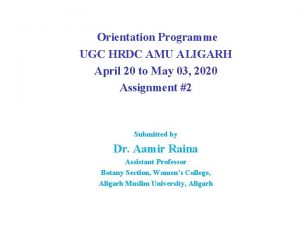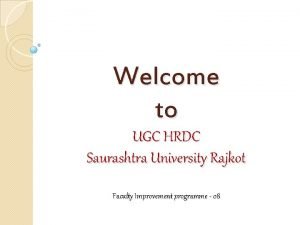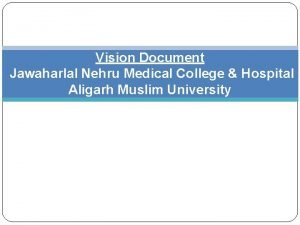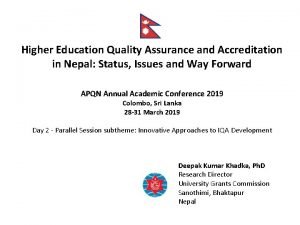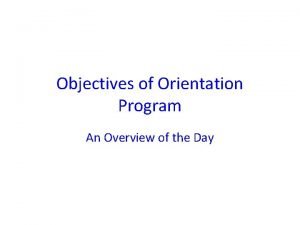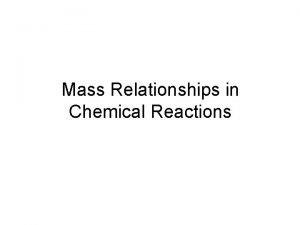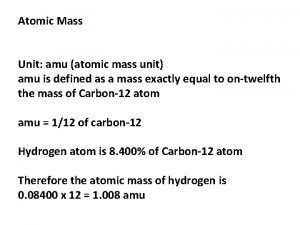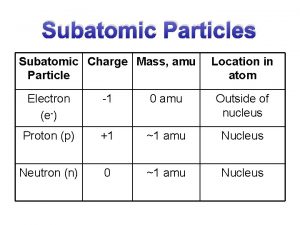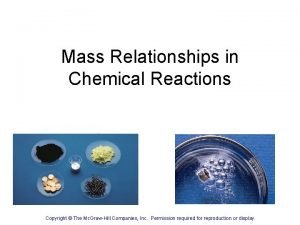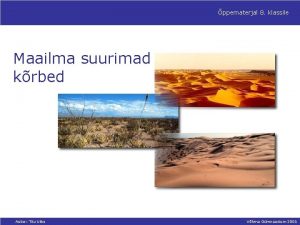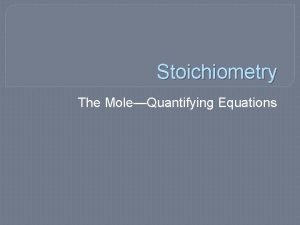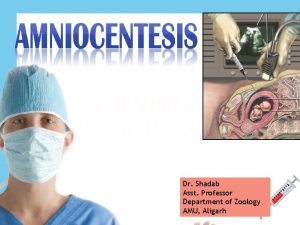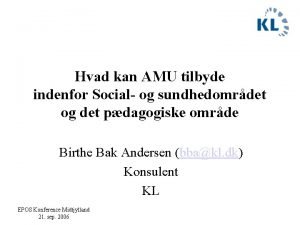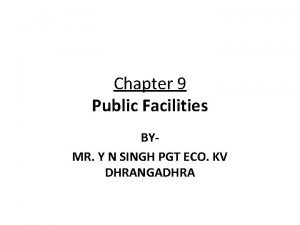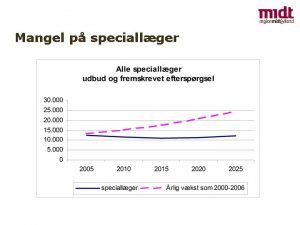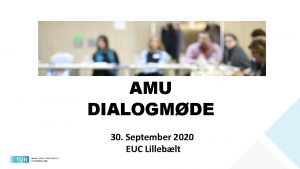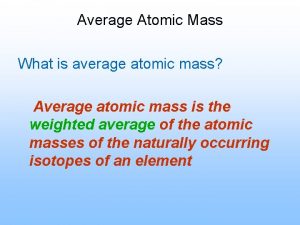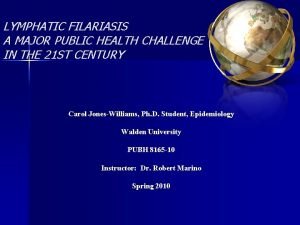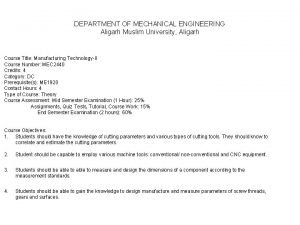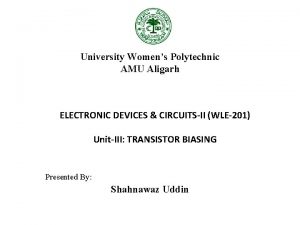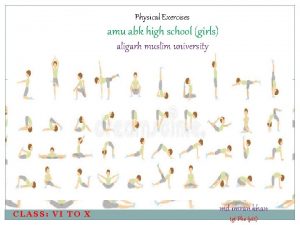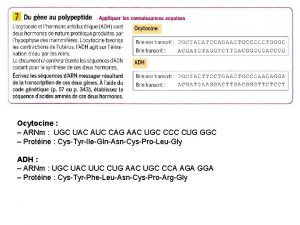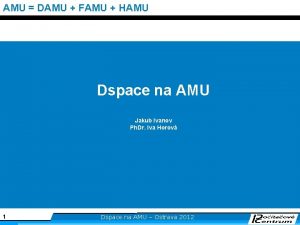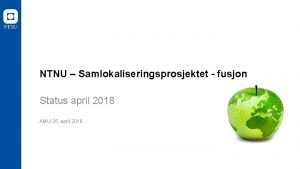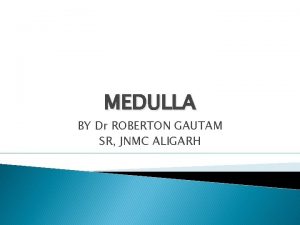Orientation Programme UGC HRDC AMU ALIGARH April 20









































- Slides: 41

Orientation Programme UGC HRDC AMU ALIGARH April 20 to May 03, 2020 Assignment #2 Submitted by Dr. Aamir Raina Assistant Professor Botany Section, Women’s College, Aligarh Muslim University, Aligarh

Agrobacterium Mediated Gene Transfer In Plants AAMIR RAINA M Sc, Ph. D (Genetics and Plant Breeding)

Gene Transfer Recombinant DNA technology is based on the insertion of a DNA fragment (Gene of interest) into a suitable cloning vector and then its introduction into a suitable host to propagate the recombinant DNA.

Gene Carrier Vehicle If a gene is to be introduced into a host cell, a carrier molecule that can transport the gene into the host cell is required. Such a molecule is called a cloning vehicle or carrier molecule or a vector.

Gene Carrier Vehicle Following are few gene carrier vehicles. Plasmids Bacteriophages Cosmids Viruses Virus vector for animal cells. Simian Virus

Making Transgenic Plants—Why? 1. Study gene function and regulation 2. Making new organismic tools for other fields of research 3. Curing genetic diseases 4. Improving agriculture and related raw materials 5. New sources of bioengineered drugs.

Genetic Engineering of Plants Must get DNA: 1. into the cells 2. integrated into the genome (unless using transient expression assays) 3. expressed (everywhere or controlled) For (1) and (2), two main approaches for plants: 1. Agrobacterium - mediated gene transfer 2. Direct gene transfer For (3), use promoter that will direct expression when and where wanted – may also require other modifications such as removing or replacing introns.

Agrobacterium tumefaciens-Nature’s smallest genetic engineer Agrobacteria soil bacteria, gram-negative, related to Rhizobia species: It invades many dicot plants when they are injured at the soil level and causes crown gall disease

Agrobacterium tumefaciens-Nature’s smallest genetic engineer The ability to cause crown gall disease is associated with the presence of Ti Plasmid within bacterial cell A remarkable feature of Ti Plasmid is that after infection part of molecule is integrated into plant chromosomal DNA. This segment called TDNA is between 15 and 30 kb in size It is maintained in a stable form in plant cellc and is passed onto daughter cells as an integral part of chromosome

Crown galls caused by A. tumefaciens on nightshade. More about Galls: http: //waynesword. palomar. edu/pljuly 99. htm http: //kaweahoaks. com/html/galls_ofthe_voaks. html

Agrobacterium tumefaciens the species of choice for engineering dicot plants; monocots are generally resistant some dicots more resistant than others (a genetic basis for this) complex bacterium – genome has been sequenced; 4 chromosomes; ~ 5500 genes

Agrobacterium tumefaciens

Infection and tumorigenesis Infection occurs at wound sites Involves recognition and chemotaxis of the bacterium toward wounded cells galls are “real tumors”, can be removed and will grow indefinitely without hormones genetic information must be transferred to plant cells

Tumor characteristics 1. Synthesize a unique amino acid, called “opine” octopine and nopaline - derived from arginine agropine - derived from glutamate 2. Opine depends on the strain of A. tumefaciens 3. Opines are catabolized by the bacteria, which can use only the specific opine that it causes the plant to produce. 4. Has obvious advantages for the bacteria, what about the plant?

Elucidation of the TIP (tumor-inducing principle) It was recognized early that virulent strains could be cured of virulence, and that cured strains could regain virulence when exposed to virulent strains; suggested an extra- chromosomal element. Large plasmids were found in A. tumefaciens and their presence correlated with virulence: called tumor-inducing or Ti plasmids.

Ti Plasmid 1. An extrachromosomal double stranded circular DNA molecule 2. Tumour inducing 3. Large (200 -kb in size) and conjugative type 4. ~10% of plasmid transferred to plant cell after infection 5. Transferred DNA (called T-DNA) integrates semi-randomly into nuclear DNA 6. Ti plasmid also encodes: enzymes involved in opine metabolism proteins involved in mobilizing T-DNA (Vir genes)

T-DNA LB aux. A aux. B cyt ocs RB LB, RB – left and right borders (direct repeat) aux. A + aux. B – enzymes that produce auxin cyt – enzyme that produces cytokinin Ocs – octopine synthase, produces octopine These genes have typical eukaryotic expression signals!

aux. A aux. B Tryptophan indoleacetamide indoleacetic acid (auxin) cyt AMP + isopentenylpyrophosphate isopentyl-AMP (a cytokinin) • Increased levels of these hormones stimulate cell division. • Explains uncontrolled growth of tumor.

Vir (virulent) genes 1. On the Ti plasmid 2. Transfer the T-DNA to plant cell 3. Acetosyringone (AS) (a flavonoid) released by wounded plant cells activates vir genes. 4. vir. A, B, C, D, E, F, G (7 complementation groups, but some have multiple ORFs), span about 30 kb of Ti plasmid.

Vir gene functions (cont. ) vir. A - transports AS into bacterium, activates vir. G post-translationally (by phosphoryl. ) vir. G - promotes transcription of other vir genes vir. D 2 - endonuclease/integrase that cuts TDNA at the borders but only on one strand; attaches to the 5' end of the SS vir. E 2 - binds SS of T-DNA & can form channels in artificial membranes vir. E 1 - chaperone for vir. E 2 vir. D 2 & vir. E 2 also have NLSs, gets T-DNA to the nucleus of plant cell vir. B - operon of 11 proteins, gets T-DNA through bacterial membranes

From Covey & Grierson

Type IV Secretion Sys. • many pathogens, also used in conjugation • promiscuous • forms T-Pilus • B 7 -B 10 span OM & IM • B 7 -B 9 in OM interacts w/B 8 & B 10 of IM to form channel • 3 ATPases • D 4 promotes specific transport • B 2 can form filaments Gauthier, A. et al. (2003) J. Biol. Chem. 278: 25273 -25276

Vir. E 2 may get DNA-protein complex across host PM Dumas et al. , (2001), Proc. Natl. Acad. Sci. USA, 98: 485

Transfer of tumour inducing Principle T-DNA is excised from the TI Plasmid and transferred to the nucleus of the plant cell. Here the T-DNA gets integrated into the plant DNA. The T-DNA can be passed onto daughter cells as an integral part of plant chromosome

The T-DNA Only small segment of Ti Plasmid is transferred to the host plant cell and gets integrated with the genome It contains genes for tumour formation(Tum) and nopalina biosynthesis(NOS) Tum genes encode enzymes that catalyse the synthesis of phytoharmones like IAA and the Cytokinin, Isopentenyl adenosine that causes tumourous growth of cells in crown galls The T-DNA is bordered by 25 bp repeats, required for the excision and transfer of T-DNA

Tumour induction by Agrobacterium Recognition of susceptible wounded plant cell - Plant exudates act as signals by inducing genes in the Vir genes of the Ti Plasmid - Acetosyringone (AS) , alpha – hydroxy acetosyringone - -Binding to wounded cells, controlled by two chromosomal genes of agrobacterium-chv-A and chv-B

Tumour induction by Agrobacterium Excision, transfer and integration - The border repeats of the T-DNA play an important role - Any DNA sequence located between the border repeats is transferred to the post plant - The T-DNA region is excised from the plasmid by the enzymes encoded by the Vir region These enzymes specifically recognize the T-DNA borders The T-DNA enters the plant cell and integrates into the host genome , mediated by host enzymes

Ti plasmid as a vector The Ti plasmid has an innate ability to transmit bacterial DNA into plant cell. This potential is exploited by the genetic engineers to use this as a vector The gene of a donnor organism can be introduced into the Ti Plasmid at the TDNA region This plassmid now becomes a recombinant plasmid By Agrobacterium infection , the donor genes can be transferred and integrated into the genotype of host This results in the production of a transgenic plant

Ti plasmid as a vector A mature plant regenerated from transformed cells will contain the cloned gene in every cell and will pass on the cloned gene onto its offsprings However regeneration of transformed plant can occure only if the Ti plasmid has been disarmed so that transformed cells donot display cancerious properties.

Disarmed Ti plasmid Disarming is possible because cancer genes are not needed for infection Infectivity is controlled by virulence region of Ti plasmid. Infactonly parts of. TDNA are involved in infection are two 25 bp repeat sequance

Disarmed Ti plasmid Any DNA placed between these two repeat sequences will be treated as T- DNA and transferred to plant It is therefore possible to remove all the cancer genes from normal T-DNA and replace them with an entirely new set of genes with out disturbing the infection process.

Disarmed Ti plasmid Removal of genes responsible of auxin cytokinin and nopaline synthesis. Disarmed Ti plasmids Deletion of T-DNA REGION. PGV 3850 is constructed from p. Ti. C 58 It has p. BR 322 with Amp. R Has Border repeats and NOS genes

Disarmed Ti plasmid Agrobacterium having this PGV 3850 can transfer the modified T-DNA into plant cells. But the recipient cells will not produce tumour, but could produce nopaline. This can be used as an efficient vector for introducing foreign genes into plants.

LIMITATIONS The main problem is of course that a unique restriction site is an impossibility with a plasmid 200 Kb in size. Novel strategies have to be developed for inserting new DNA into plasmid.

Binary vector system Strategy: 1. Move T-DNA onto a separate, small plasmid. 2. Remove aux and cyt genes. 3. Insert selectable marker (kanamycin resistance) gene in T-DNA. 4. Vir genes are retained on a separate plasmid. 5. Put foreign gene between T-DNA borders. 6. Co-transform Agrobacterium with both plasmids. 7. Infect plant with the transformed bacteria.

Binary vector system

Construction of Cointegrate A foreign gene cloned into an appropriate plasmid (p. BR 322) can be integrated with the disarmed Ti plasmid by a homologous recombination A compound plasmid called cointegrate is formed.

2 Common Transformation Protocols 1. Leaf-disc transformation - after selection and regeneration with tissue culture, get plants with the introduced gene in every cell 2. Floral Dip – does not require tissue culture. Reproductive tissue is transformed and the resulting seeds are screened for drugresistant growth. (Clough and Bent (1998) Floral dip: a simplified method for Agrobacterium-mediated transformation of Arabidopsis thaliana. Plant Journal 16, 735– 743)

Making a transgenic plant by leaf disc transformation with Agrobacterium. S. J. Clough, A. F. Bent (1998) Floral dip: a simplified method for Agrobacterium-mediated transformation of Arabidopsis thaliana. Plant Journal 16, 735– 743.

Uses Employing method, genes from entirely unrelated plants can be transferred to other dicots transgenic plants with the following attributes were developed. Resistance – To antibiotics Pesticides and insect pests Drought and herbicides

Thank You
 Aligarh muslim university orientation programme
Aligarh muslim university orientation programme Hrdc rajkot
Hrdc rajkot Jnmc hospital aligarh
Jnmc hospital aligarh Aligarh movement
Aligarh movement Functions of ugc
Functions of ugc Photo credit
Photo credit Qaa certified meaning in nepali
Qaa certified meaning in nepali Nba criteria 7 continuous improvement
Nba criteria 7 continuous improvement Difference between polycentric and regiocentric
Difference between polycentric and regiocentric Testyjezykowe amu edu
Testyjezykowe amu edu Atomic weight units
Atomic weight units Define the atomic mass unit
Define the atomic mass unit Carbon amu
Carbon amu Moveonline amu
Moveonline amu Mass of subatomic particles in amu
Mass of subatomic particles in amu Atomic mass of copper in amu
Atomic mass of copper in amu Hms tavle krav
Hms tavle krav Molecules to grams
Molecules to grams Dalton mass unit
Dalton mass unit Nuubia kõrb
Nuubia kõrb Is atomic mass a whole number
Is atomic mass a whole number Department of zoology amu
Department of zoology amu Epos amu
Epos amu Public facilities relate to people's
Public facilities relate to people's Andreas glahn wernlund
Andreas glahn wernlund Kørekort d1 amu
Kørekort d1 amu Amu to mol
Amu to mol Amucont
Amucont Gigue amu
Gigue amu Amu msc
Amu msc Transition metal with 51 neutrons
Transition metal with 51 neutrons Boron amu
Boron amu 24 april 2007
24 april 2007 (2005-2006) school calendar
(2005-2006) school calendar Pada tanggal 1 april 2011 cv seneng makmur
Pada tanggal 1 april 2011 cv seneng makmur April 4
April 4 1986 april 26
1986 april 26 Guten morgen freitag 1 april
Guten morgen freitag 1 april 4 april christian
4 april christian Leonardo da vinci was born on 15 april 1452 near
Leonardo da vinci was born on 15 april 1452 near April school activities
April school activities This day in history april 15
This day in history april 15
